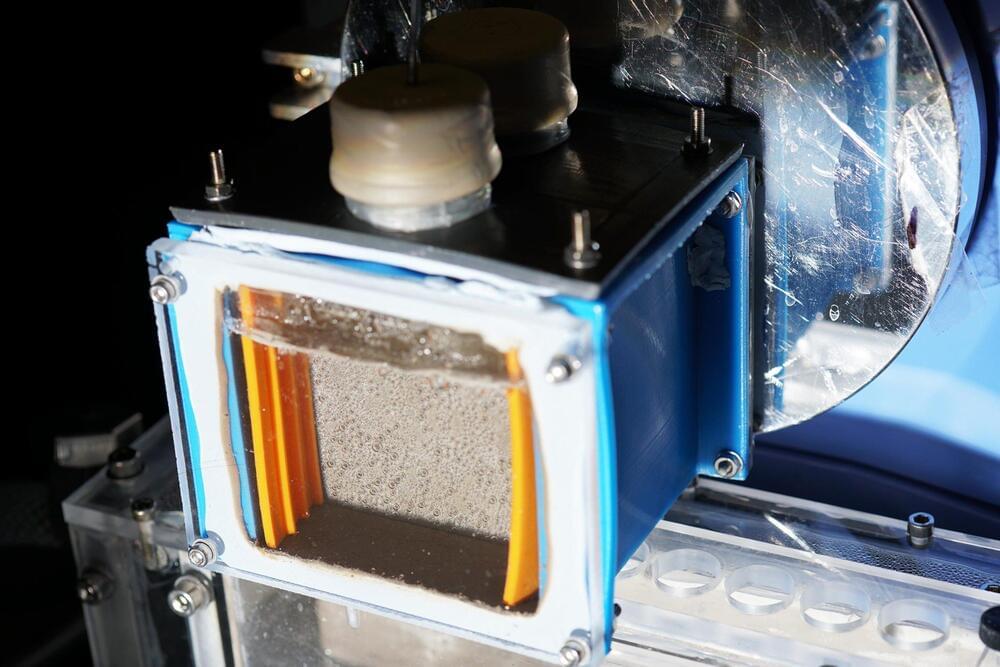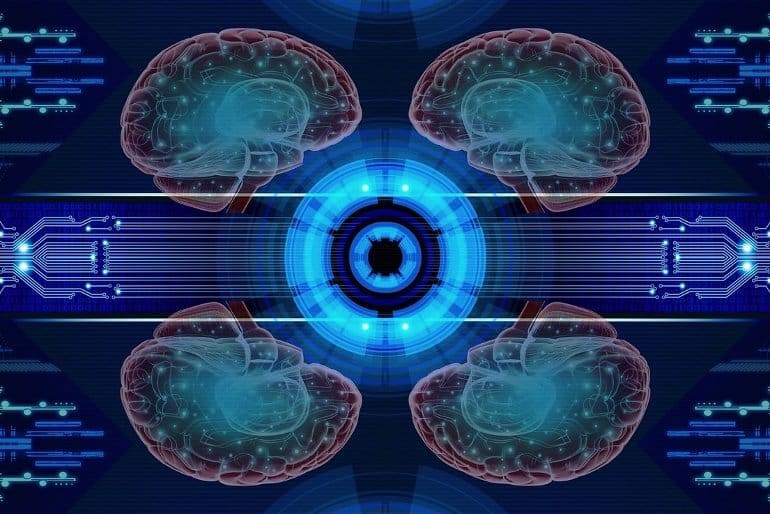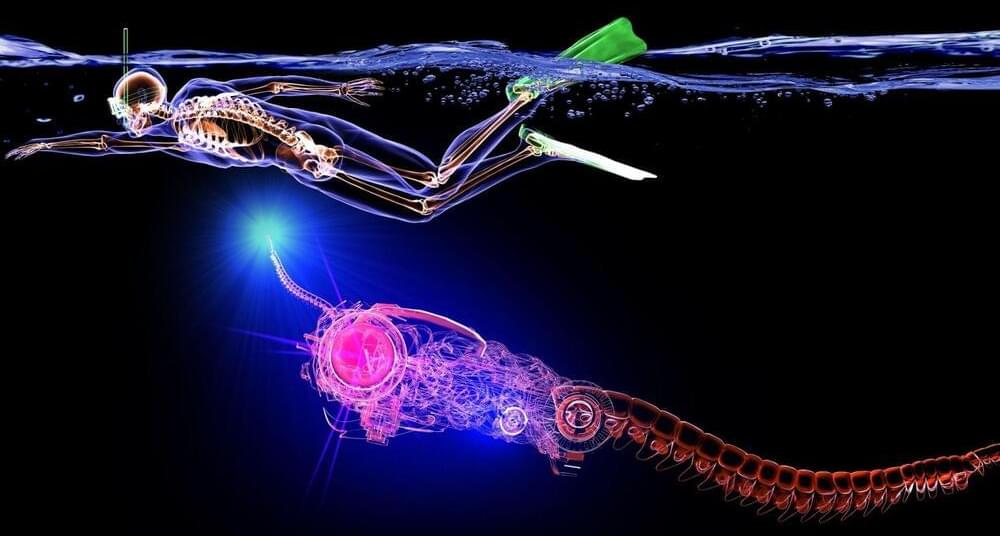The first recorded brain activity of a person during their death suggests a biological trigger for near-death experiences.
Making Oxygen Out of Thin Air
Posted in sustainability
Circa 2015 face_with_colon_three
It’s possible to convert carbon dioxide to oxygen in just one step.
Greenfluidics, a Mexico-based startup, promises newer, greener bio panels that can provide fresh oxygen and considerably bring down your power consumption while also delivering biomass-based fuel to you, New Atlas has reported.
With the world trying to reduce carbon emissions, algae have taken quite the center stage in capturing the carbon dioxide being released. From using algal blooms as large carbon capture sites to even powering electronic devices using algae, researchers are trying to use these green organisms everywhere.
Researchers have developed a standalone device that converts sunlight, carbon dioxide, and water into a carbon-neutral fuel, without requiring any additional components or electricity.
The device, developed by a team from the University of Cambridge, is a significant step toward achieving artificial photosynthesis.
Photosynthesis is how plants and some microorganisms use sunlight to synthesize carbohydrates from carbon dioxide and water.
Summary: “Off-line” periods during AI training mitigated “catastrophic forgetting” in artificial neural networks, mimicking the learning benefits sleep provides in the human brain.
Source: UCSD
Depending on age, humans need 7 to 13 hours of sleep per 24 hours. During this time, a lot happens: Heart rate, breathing and metabolism ebb and flow; hormone levels adjust; the body relaxes. Not so much in the brain.
Breadcrumbs…
When University of Cambridge astronomer Amy Bonsor and her colleagues studied the spectrum of light from white dwarfs — the burned-out remains of small stars — they noticed flecks of heavier elements on the stars’ surfaces where there should have been only a glowing expanse of helium and hydrogen. The astronomers realized the stars’ surfaces were littered with debris from asteroids and comets that had fallen into the stars, visible on the surface just briefly before sinking into the depths.
The chemical makeup of those planet crumbs — visible in their spectra, the specific wavelengths of light each chemical emits — suggests that the building blocks of planets are as ancient as a star system itself, rather than things that form later from the disk of material orbiting the star.
What’s New — It’s morbid but true: most stars eventually gobble up at least some of the planets and other chunks of space rock in their orbits. Solar systems can be dangerous places, especially in their early stages, with planets’ gravity bumping other planets — or smaller things, like asteroids and comets –—off their courses. Some of those objects get launched out of the solar system to start a new life as rogue planets, but others end up spiraling inward toward the immense gravity of the star at the heart of the system.
Theoretical physicist and author, Julian Barbour, talks to us about why time is an illusion and what this means for the quantum mechanics of the universe.
#time #quantum #physics #interview #iaitv.
** Subscribe to the Institute of Art and Ideas https://www.youtube.com/user/IAITV
** Listen to our weekly podcast: https://soundcloud.com/instituteofart… Donate to the Institute of Art and Ideas: https://iai.tv/support-the-iai/donate Julian Barbour is a theoretical physicist working on on foundational issues in physics for nearly fifty years, specializing in the study of time and motion. He is emeritus visiting professor in physics at the University of Oxford. He is the author of Absolute or Relative Motion?, The End of Time, and The Janus Point. Barbour’s work on time has forcused on the illusion of time. He argues, time as such does not exist but only change. He has shown how, alongside the relativity of motion, the notion of time as change can be built into the foundations of dynamics and looked at the consequences of this implication for the quantum mechanics of the universe. For more from Julian Barbour watch: Does Infinity Exist? | Julian Barbour, Laura Mersini-Houghton, Peter Cameron https://iai.tv/video/the-infinite-puzzle Time, Space and Being | Julian Barbour, Huw Price, Michela Massimi https://iai.tv/video/time-space-and-b… The Elegant Universe | Julian Barbour, Nancy Cartwright, Steve Fuller https://iai.tv/video/the-elegant-univ… DELVE DEEPER For debates and talks: https://iai.tv For articles: https://iai.tv/articles For courses: https://iai.tv/iai-academy/courses.
** Donate to the Institute of Art and Ideas: https://iai.tv/support-the-iai/donate.
Julian Barbour is a theoretical physicist working on on foundational issues in physics for nearly fifty years, specializing in the study of time and motion. He is emeritus visiting professor in physics at the University of Oxford. He is the author of Absolute or Relative Motion?, The End of Time, and The Janus Point. Barbour’s work on time has forcused on the illusion of time. He argues, time as such does not exist but only change. He has shown how, alongside the relativity of motion, the notion of time as change can be built into the foundations of dynamics and looked at the consequences of this implication for the quantum mechanics of the universe.
For more from Julian Barbour watch:
Does Infinity Exist? | Julian Barbour, Laura Mersini-Houghton, Peter Cameron.
Julian BARBOUR — Does Time Exist?
Posted in futurism
Julian Barbour, visiting professor at the University of Oxford and the author of The End of Time, addresses the question, Does Time Exist? Barbour explores t…
It has been estimated that by 2030, even if all existing mines continue at their normal rate of production, there still will be barely enough metal to satisfy half of global demand.
These soft robots can do the butterfly stroke.
A team of scientists at North Carolina State University (NCSU) has developed two butterfly-shaped soft robots capable of swimming at 1.70 and 3.74 body lengths per second (BL/s). They are being referred to as the fastest swimming soft machines in the world because until now, soft robots were known to swim at a maximum speed of one body length per second.
Devrimb/iStock.
One of the authors and the associate professor at NCSU, Jie Yin told IE, “The connection has not been built until my kids went to the swimming school and learned the butterfly stroke. The butterfly stroke is a very fast swimming technique that requires an undulating body and also rotating and flapping arms.”









